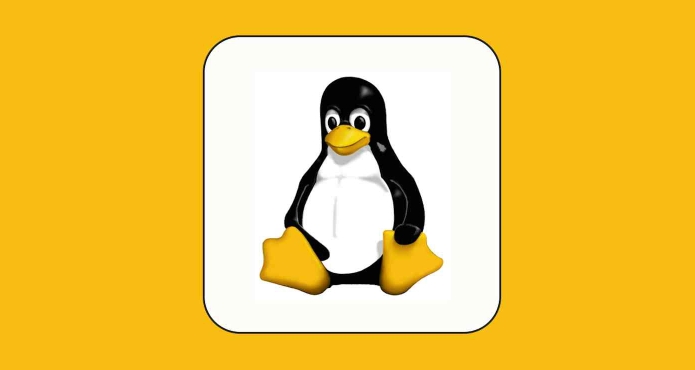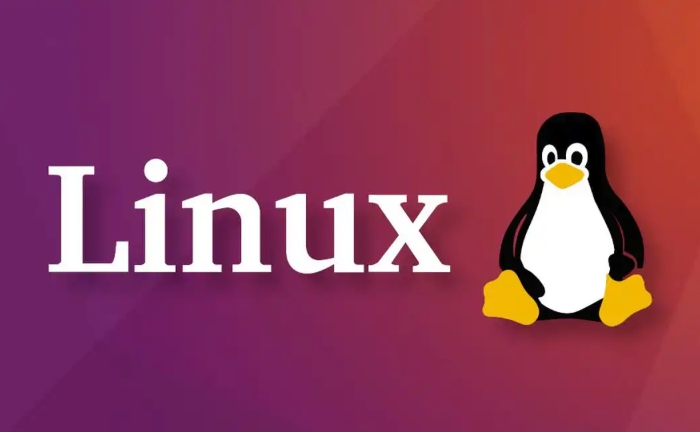What is the difference between the Linux kernel and a Linux OS?
Jul 11, 2025 am 02:09 AMThe Linux kernel is the core component managing hardware, processes, and memory, but it's not the entire OS. It acts as a bridge between software and hardware, handling resource management, multitasking, and device drivers. A full Linux OS includes additional components like a shell, utilities, system tools, graphical interfaces, and package managers, often developed by different groups such as GNU. People often confuse the kernel with the complete OS, referring to distributions like Ubuntu or Fedora as "Linux," which are actually bundles of the kernel and other software. Understanding this distinction helps in troubleshooting, software selection, and learning, clarifying what part of the system is being worked on during tasks like updates or configuration.

The Linux kernel is the core of a Linux operating system, but it's not the entire OS. Think of the kernel as the engine of a car—it’s essential, but you need more parts to make the whole vehicle work.

What Exactly Is the Linux Kernel?
The Linux kernel is the central component that manages hardware, processes, and memory. It acts as a bridge between your software and hardware. Without it, your system wouldn’t know how to talk to the CPU, hard drive, or even your keyboard.

It handles tasks like:
- Managing system resources
- Enabling multitasking
- Controlling device drivers
You can think of it as the traffic cop of your system—making sure everything runs smoothly and nothing crashes into each other.

What Makes Up a Linux OS?
A full Linux OS includes much more than just the kernel. It also comes with:
- A shell (like Bash)
- Utilities (such as
ls,cp, andgrep) - System tools (like systemd or init)
- Graphical interfaces (like GNOME or KDE)
- Package managers (like apt or dnf)
These components are often developed by different groups. For example, many of the command-line tools come from GNU projects, while the look and feel of your desktop might come from another project altogether.
So when someone says they’re using “Linux,” they're usually referring to a complete OS built around the Linux kernel.
How Are They Often Confused?
Many people refer to their system as "Linux," which makes sense in casual use. But technically, what they're running is a distribution (or distro) like Ubuntu, Fedora, or Arch. These distributions bundle the Linux kernel with other software to create a usable operating system.
Another common mix-up: updates. When your system says there's a new version of Linux, it might actually be updating the kernel, the desktop environment, or some other part of the system. It's not always about the kernel itself, even though it's called a "Linux update."
Why This Difference Matters
Understanding the distinction helps when troubleshooting, choosing software, or even deciding what to learn. If you're diving into kernel modules or compiling your own kernel, you're dealing directly with the Linux kernel. But if you're configuring services or installing apps, you're working more broadly within the Linux OS.
Knowing where one ends and the other begins gives you better clarity on what you're really working with.
That’s basically it — not too complicated once you break it down, but an important detail for anyone digging deeper into Linux systems.
The above is the detailed content of What is the difference between the Linux kernel and a Linux OS?. For more information, please follow other related articles on the PHP Chinese website!

Hot AI Tools

Undress AI Tool
Undress images for free

Undresser.AI Undress
AI-powered app for creating realistic nude photos

AI Clothes Remover
Online AI tool for removing clothes from photos.

Clothoff.io
AI clothes remover

Video Face Swap
Swap faces in any video effortlessly with our completely free AI face swap tool!

Hot Article

Hot Tools

Notepad++7.3.1
Easy-to-use and free code editor

SublimeText3 Chinese version
Chinese version, very easy to use

Zend Studio 13.0.1
Powerful PHP integrated development environment

Dreamweaver CS6
Visual web development tools

SublimeText3 Mac version
God-level code editing software (SublimeText3)

Hot Topics
 Exploring the functions of the Linux kernel: a detailed introduction to the five major parts
Mar 21, 2024 am 09:57 AM
Exploring the functions of the Linux kernel: a detailed introduction to the five major parts
Mar 21, 2024 am 09:57 AM
As the core part of the operating system, the Linux kernel is responsible for important functions such as managing hardware resources and providing system calls. This article will delve into the five major parts of the Linux kernel, including process management, file system, network communication, device driver and memory management, and provide a detailed introduction and code examples. 1. Process Management Process Creation In the Linux kernel, process creation is implemented through the fork() system call. Here is a simple example code: #include
 An in-depth exploration of the Linux kernel source code distribution
Mar 15, 2024 am 10:21 AM
An in-depth exploration of the Linux kernel source code distribution
Mar 15, 2024 am 10:21 AM
This is a 1500-word article that explores the Linux kernel source code distribution in depth. Due to limited space, we will focus on the organizational structure of the Linux kernel source code and provide some specific code examples to help readers better understand. The Linux kernel is an open source operating system kernel whose source code is hosted on GitHub. The entire Linux kernel source code distribution is very large, containing hundreds of thousands of lines of code, involving multiple different subsystems and modules. To gain a deeper understanding of the Linux kernel source code
 Practical combat | RISC-V Linux entry address 2M reserved memory optimization
Aug 01, 2023 pm 03:37 PM
Practical combat | RISC-V Linux entry address 2M reserved memory optimization
Aug 01, 2023 pm 03:37 PM
The previous article analyzed the page table creation for RISC-V Linux startup. It was mentioned that the RISC-V Linux entry address must be 2M aligned. Today I will talk about how to solve the 2M alignment problem, or how to optimize part of the memory.
 Is non-MMU support provided by the uClinux port of the Linux kernel?
Jan 26, 2024 pm 05:18 PM
Is non-MMU support provided by the uClinux port of the Linux kernel?
Jan 26, 2024 pm 05:18 PM
It’s long and has a lot of technical content, so click to follow it and you won’t get lost. Preface: Understanding the Linux Kernel A computer system is a symbiosis of hardware and software. They are interdependent and inseparable. Computer hardware Linux kernel transplantation steps include peripheral devices, processors, memory, hard drives and other electronic devices that make up the computer cylinder. And without software to operate and control it, it cannot work by itself. The software that completes this control work is called the operating system. In Linux terminology, it is called the "kernel" or "core". The main modules (or components) of the Linux kernel are divided into the following parts: storage management, CPU and process management, file system, device management and driver, network communication Linux forum, and system
 Secret tips for Linux kernel TCP protocol stack optimization revealed
Jan 28, 2024 am 09:39 AM
Secret tips for Linux kernel TCP protocol stack optimization revealed
Jan 28, 2024 am 09:39 AM
Hello dear readers! Here, I am honored to share with you the valuable experience and skills I have accumulated as a senior network engineer with my professional skills in the development and optimization of the Linux kernel TCP protocol stack. I believe that through this article, we can learn from each other and discuss it, and bring practical and useful reference materials to you who have a strong interest in this field or are currently working on it. 1. TCP connection establishment TCP connection establishment is a key transaction of the TCP protocol stack, but it is not uncommon to face many connection problems. After careful consideration and detailed debugging, I discovered some common and practical problems and their solutions, including preventing SYN flooding attacks (by adjusting system parameters) and dealing with network congestion (that is, using TCPFastOp
 Linux Kernel: Revealing the Hidden BOSS of Computer Operating Systems
Mar 24, 2024 am 09:10 AM
Linux Kernel: Revealing the Hidden BOSS of Computer Operating Systems
Mar 24, 2024 am 09:10 AM
Discusses the view that the Linux kernel plays an important role in computer operating systems. Linux kernel design and implementation. Through in-depth analysis of Linux kernel design and practical applications, it reveals its prominent position and influence in this field. 1. Optimized memory management By using virtual memory management technology, the Linux kernel can efficiently complete memory allocation and recycling. With the help of the replacement page algorithm, the Linux kernel is designed and implemented to accurately handle the mapping relationship between physical memory and virtual memory. Flexible adjustments can be made based on the specific needs of the application, thereby improving overall system performance. 2. The powerful process management kernel uses its excellent multi-tasking technology to enable multiple processes to coexist harmoniously in a single system. Carefully formulated
 Explore the relationship between the Android system and the Linux kernel
Mar 14, 2024 pm 12:48 PM
Explore the relationship between the Android system and the Linux kernel
Mar 14, 2024 pm 12:48 PM
The Android system and the Linux kernel are two closely related entities, and the relationship between them is close and complex. In the Android system, the Linux kernel plays an important role, providing underlying hardware drivers and system call support for the Android system. This article will explore the relationship between the Android system and the Linux kernel, how they interact and work together, and provide some specific code examples. Android is a mobile operating system developed based on the Linux kernel and is mainly used for mobile devices such as smartphones and tablets. L
 Do you really know how to debug Linux kernel failures? You will be enlightened after reading this article!
Aug 03, 2023 pm 04:50 PM
Do you really know how to debug Linux kernel failures? You will be enlightened after reading this article!
Aug 03, 2023 pm 04:50 PM
The Linux kernel is the core of the operating system and controls access to system resources such as the CPU, I/O devices, physical memory, and file systems. During the boot process and while the system is running, the kernel writes various messages to the kernel ring buffer. These messages include a variety of information about system operations.






